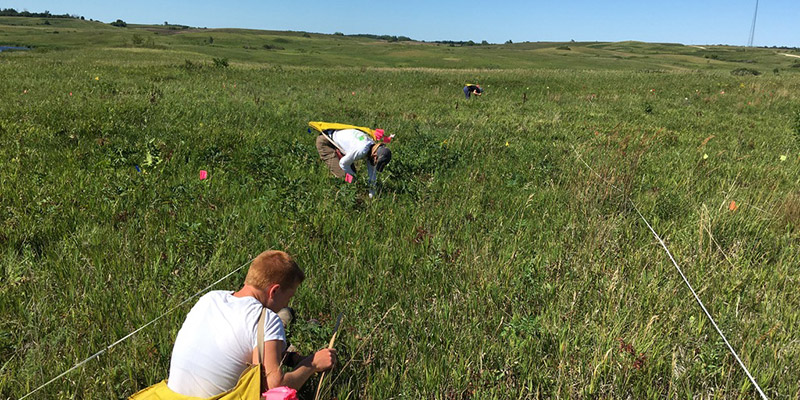
In the 1800s, grasslands of North America were vast. Since then, about 99 percent of the tallgrass prairie has been destroyed. The small, isolated patches of prairie that remain harbor many plant species; yet, rates of local plant extinctions are alarmingly high. This long-term project investigates why some populations go extinct and others persist in the face of changing environmental conditions. We focus on two evolutionary processes affecting a model prairie plant species, a purple coneflower, Echinacea angustifolia: adaptation and inbreeding depression. We use formal, quantitative genetic approaches, common garden experimental designs, and aster statistical methods to quantify heritability of Darwinian fitness, population differentiation, and inbreeding depression. A feature of the research is that experiments are conducted in a realistic habitat--prairie restorations. Each summer, we measure a suite of plant traits, including survival, the number of leaves, insect damage, and the number of flowering heads. We also harvest all seed heads, and volunteers in the lab count how many fruits each plant produced. The core datasets comprise annual individual fitness records of more than 17,000 plants in ten experimental plots starting in 1996. In addition to advancing scientific knowledge and disseminating information to scientists and land stewards, this project provides research experience and training to diverse participants at a level appropriate for their interests and career stage: high school, college, and graduate students, teachers, and citizen scientists in both Minnesota and at the Chicago Botanic Garden. (Wagenius and many collaborators)

